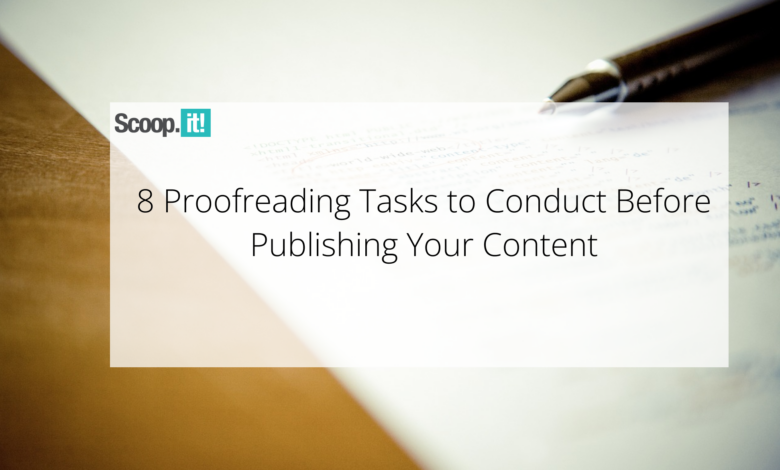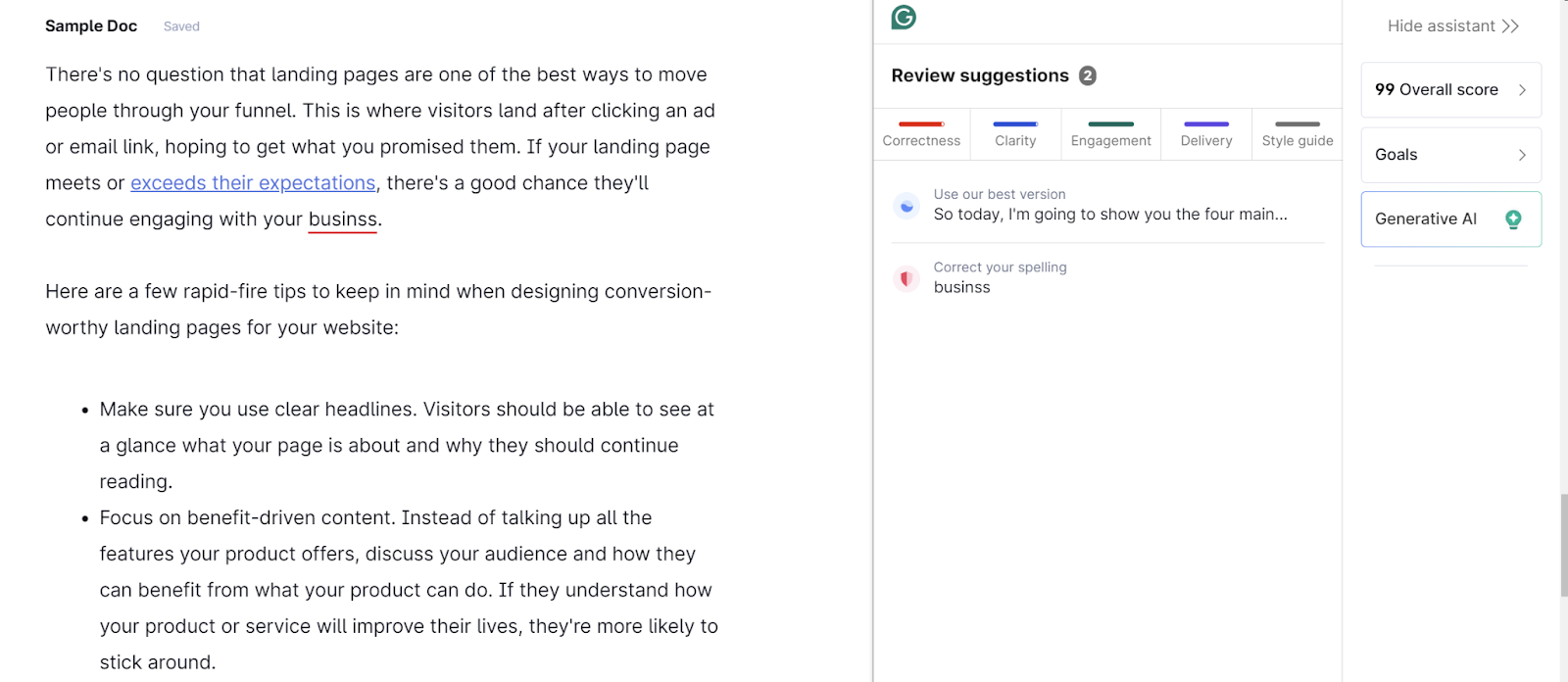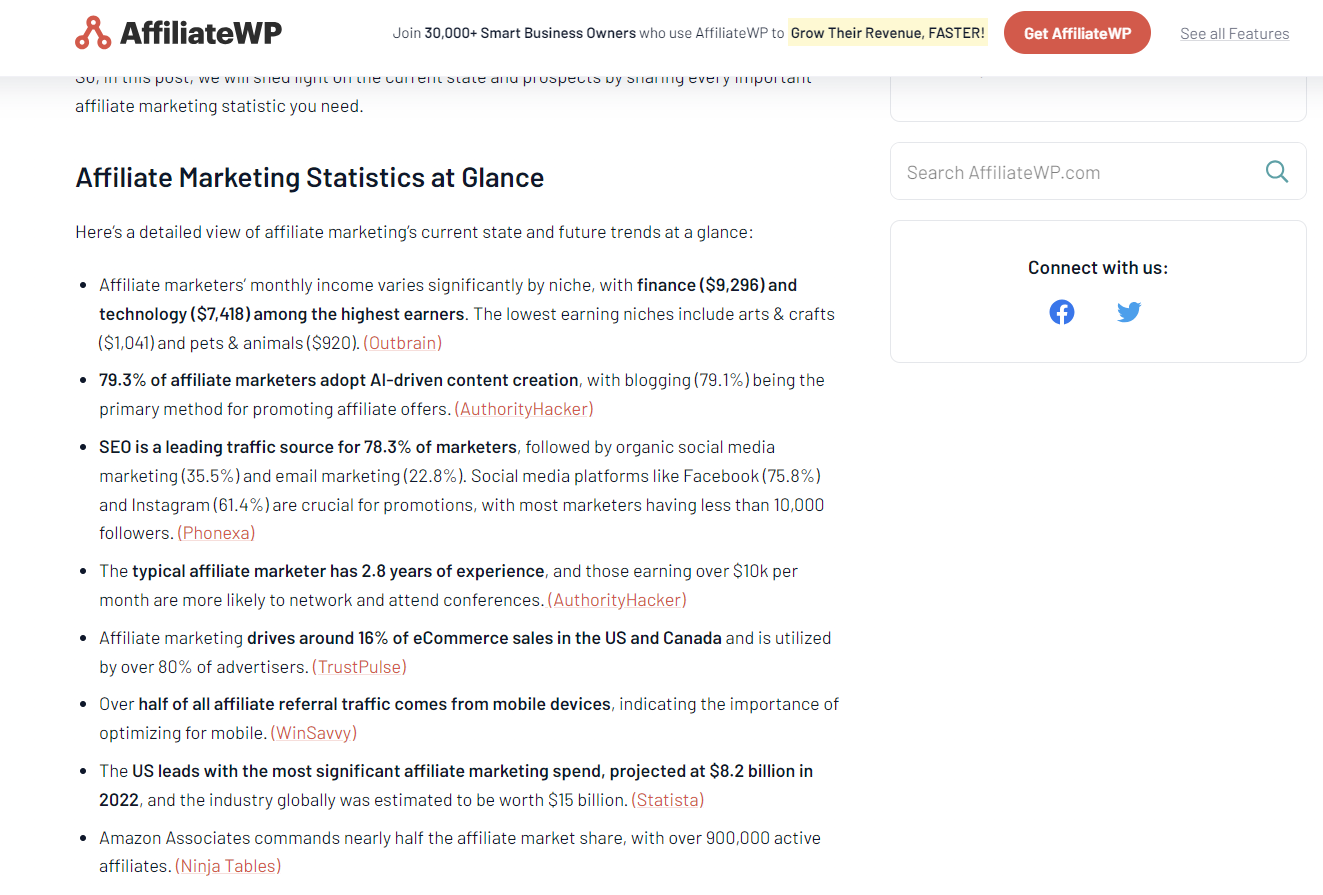8 Proofreading Tasks to Do Before Publishing Your Content


Do you want to learn the best way to proofread your content before publishing it? If so, you’ve come to the right place!
Whether you’re a blogger, marketer, or solopreneur, the quality of your content has a direct impact on your credibility and reader engagement. We found that almost 50% of buyers read 3-5 blog posts before making a purchase from a new business. So it’s easy to see why this aspect of your content marketing strategy is so crucial to your success.
In other words, if your content is polished and professional, you have a much better chance of turning new visitors into loyal customers.
Today I’m going to guide you through 8 proofreading tasks that will help you take your content from good to great. These strategies have worked well for me over the years, and we are confident they will work for you too!
Why proofreading is important
Before we dive in and start sharing tips, it’s important to understand why proofreading is such an important piece of the puzzle. Here are some benefits so you can better understand the value that proofreading brings to your blog as well as your content curation strategy:
Improve brand image and build trust – Your content is often the first point of contact between your brand and your potential customers. Neat, error-free writing will help you build trust and reinforce a positive brand image.
Show that you are credible and professional – Mistakes in your content can damage your credibility and make your work appear sloppy. When readers encounter spelling mistakes, grammatical issues, or inconsistencies, they will likely question your brand’s authority and professionalism.
Boost reader engagement – If your audience notices glaring errors in your article, it could distract them and take their attention away from your content. On the other hand, a well-read article keeps readers focused on your message and value proposition, which can increase engagement and understanding.
Increase leads and sales – 60% Marketers say high-quality content generates demand and leads. So well-designed posts are more likely to help you achieve your goals, whether it’s educating your audience, generating leads, or driving conversions.
Now that you know some of the ways proofreading can help you, let’s take a look at what you need to do before publishing on your next piece of content.

8 Proofreading Tasks to Improve Your Content
1. Check for spelling, punctuation and grammar errors
One of the first things you should do when proofreading is to check the content you want to publish for spelling, punctuation, and grammar issues.
There are many tools that can help you with this task, such as Grammarly and Hemingway Editor. These tools can catch common errors and help you refine your content. But remember that they are not perfect. For example, sometimes it will ask you to change your wording to something unnecessarily complicated. You will need to use your own judgment when agreeing to changes.
This is exactly why you’ll want to flex your editing muscles alongside these tools. I suggest taking the time to read your content aloud, as this technique helps you identify awkward wording, run-on sentences, and other issues that might not be apparent during silent reading.
You should also pay special attention to commonly confused words, such as homophones like “their/there/they are” or “your/you are,” which can easily escape automated checks.
It takes time and patience to be a good editor, but once you get the hang of it, this first task will become second nature.

2. Use Consistent Formatting
Consistent formatting is essential if you want to ensure that people read your content to the end. On an involuntary level, we all get distracted when a pattern is broken, and that includes what we read.
When a title doesn’t make sense, or there’s extra space between some paragraphs but not others, people get confused. Instead of putting your audience in this situation, take the time to make sure your message looks good and is correctly formatted.
You can do this by checking the preview version of your post. You and a few team members should go through it so you can identify any weird formatting gaps that need to be fixed.
This task doesn’t take much time, but it is an essential part of the process.
3. Examine sentence structure and flow
The structure and flow of your content should ideally keep readers engaged from start to finish. If all your sentences and paragraphs are the same length, your message will look slightly “off,” making engagement a little easier said than done.
When you get to this stage, read your message and make sure you have a healthy mix of short, punchy sentences and longer, more complex sentences. This is the best way to hold readers’ attention.
You should also take this opportunity to ensure that your paragraphs and sections all flow smoothly and logically. Bad transitions could confuse your audience, which is not good for you or them.
If you follow my previous tip and read your message out loud while proofreading, you can easily identify opportunities to improve your flow.
4. Evaluate consistency of style and tone
I’ve found that maintaining a consistent tone and style throughout your content is crucial to creating a memorable message. user experience. If you switch between formal, professional, and casual without warning, people will wonder who you want to hear your message.
My advice is to take a few seconds to check that the language choices and phrasing match this tone from start to finish. Pay close attention to your use of industry jargon or technical terms to be sure they are relevant to your audience.
Additionally, if you’re writing on behalf of a brand or organization or mentioning them in your work, check that your content matches their style guidelines. Building consistency in tone and style helps strengthen your message and strengthen your connection with your readers.
5. Get rid of redundancies
Concise writing is often the best way to engage with your readers. So, while you’re revising your content, keep an eye out for unnecessary words or phrases that don’t add value to your content. You will need to pay particular attention to repetitive concepts.
You should look for opportunities to consolidate information by combining similar sentences or removing sections that do not benefit the audience.
Tightening up your writing can seem daunting at first. There is a misconception that more words means more value, but I have found that in most cases you can have a much greater impact by using fewer words.
6. Make sure the facts and data are accurate
The last thing you want to do is post content that could be interpreted as misinformation. Not only will this damage your reputation with long-time visitors, but it can also impact how new people interact with your brand.
Imagine if someone’s first experience hearing about your business was about how you posted inaccurate information, and you can see why this is a big deal.
So, to maintain your integrity, verify all statistics, dates and other factual information contained in your posts. Taking a few minutes to do this while proofreading will lead to accurate and reliable content.
It’s also important to use up-to-date sources and citations so people can see where you get your information. I have found that this attention to detail will not only build your credibility, but also add value to your audience, making it more likely that they will turn to you in the future.

7. Check the links
Now let’s talk about checking your links. Most web pages contain a mixture of internal links as well as backlinks to other websites. Before you click Publish, you need to go through and make sure all of these links are working as expected.
Failing to take this step could lead readers to end up on the wrong page, steering them away from your content. Imagine that you are an affiliate marketer promoting a bunch of different products. One day you publish an article, and it’s the biggest in terms of traffic and clicks.
But you forgot to check the links and half of your product pages are redirecting to a 404 page, meaning readers can’t purchase with your code. Sounds like a nightmare, right?
Well, checking each link manually is the best way to avoid this situation. This task will also give you another chance to adjust your anchor text so that each link is perfect for your audience and search engines.
8. Do a final reading
The last thing you should do is give your content a final read. My best advice is that you need to put some distance between the other steps and this one. You need a fresh set of eyes to be able to identify opportunities for improvement or mistakes that you missed in the other steps.
It’s not a bad idea to forward the message to a few of your colleagues so they can share their opinions. Since they haven’t written or made other edits, they can give you the freshest perspective possible, which will help you refine your work so it’s ready for the public.
At the end of the article, you should determine that it is readable, engaging, and ultimately accomplishes what you created it to do.
Conclusion
And there you have it! The eight proofreading tasks above will help you create and curate better content for your audience. If you want to post unique, engaging, and clickable content, you need to find a way to ensure your posts are high quality and stand out. In my experience, a rigorous editing process is one of the keys to achieving this.
Turn these best practices into habits and you’ll have a much better chance of delivering polished, professional content that will keep readers coming back to your site.
![]() Loading…
Loading…



